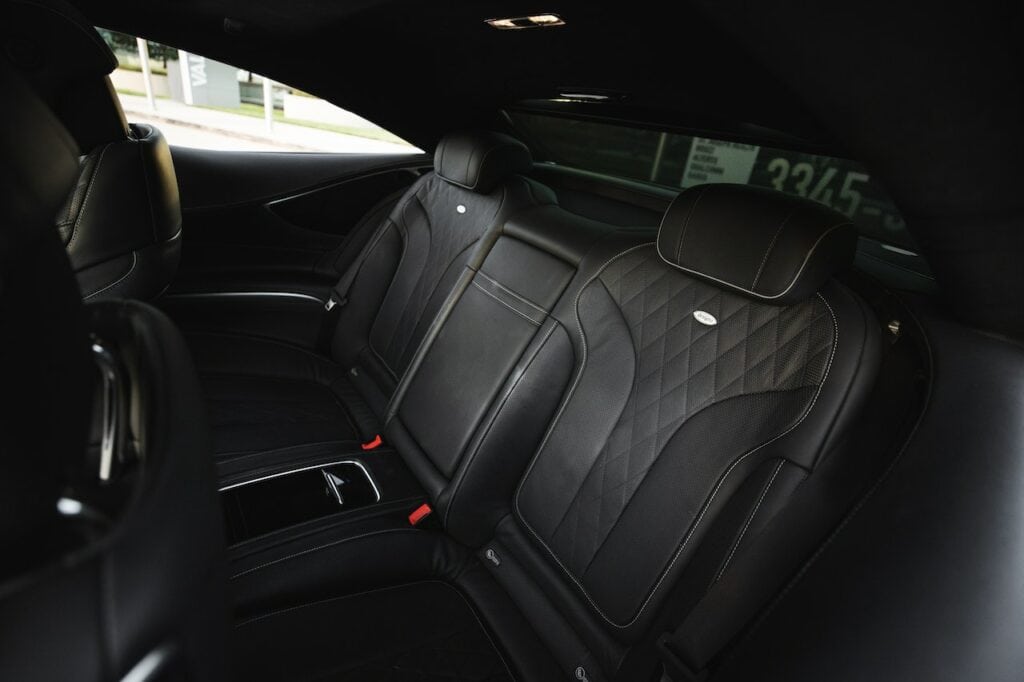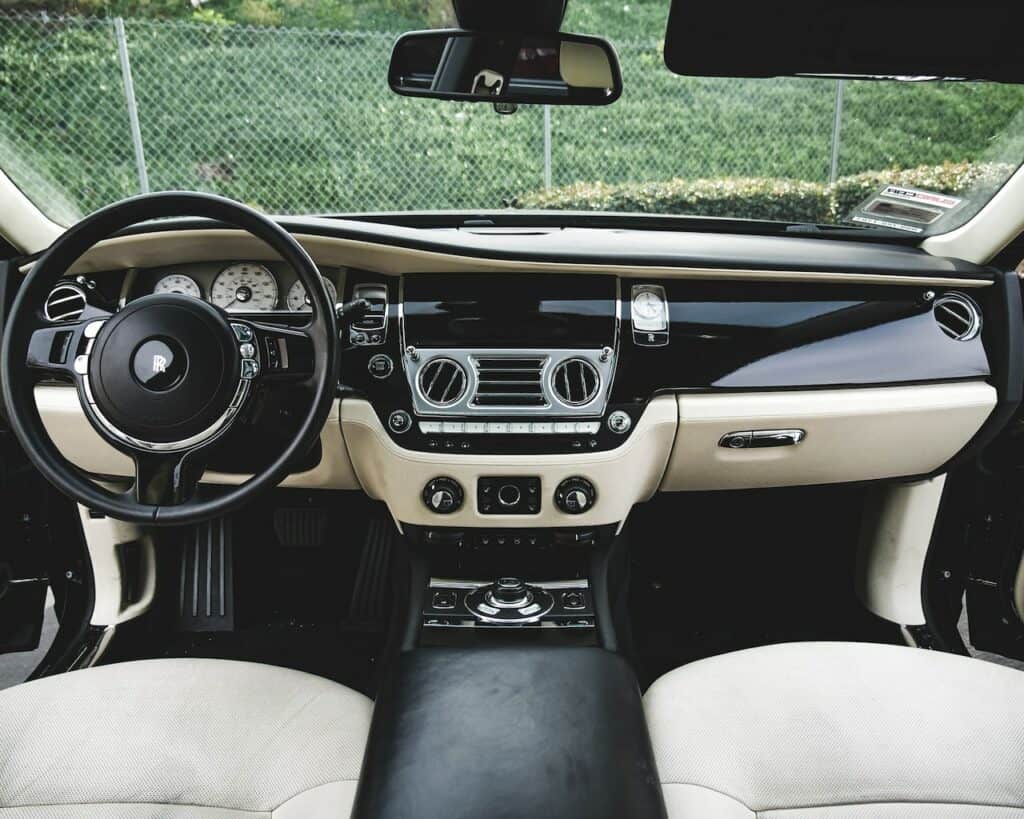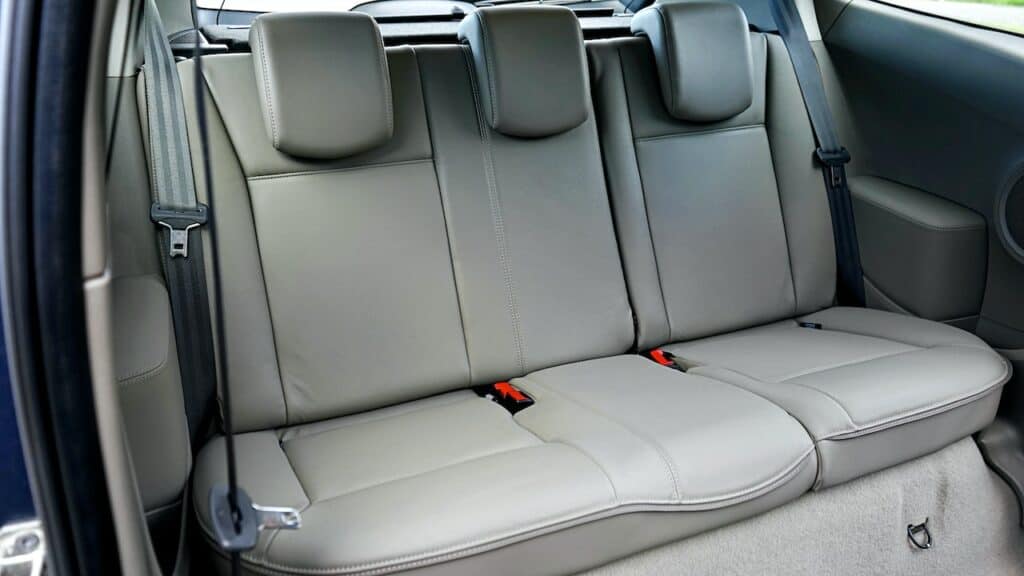Leather seats are a luxurious addition to any car, but they can be easily damaged by car seats. Car seat marks on leather can be an eyesore and can even reduce the value of your car. Fortunately, there are ways to prevent these marks from occurring.
Understanding Leather Seats Leather seats are made from animal skin and are delicate in nature. They require proper care and maintenance to keep them looking their best. Leather is also porous, which means it can absorb liquids and oils. This can cause stains and damage to the leather if not cleaned properly.
Common Causes of Car Seat Marks Car seat marks on leather are caused by the constant friction and pressure of the car seat against the leather. This can cause scuffs, scratches, and even tears in the leather. Other common causes of car seat marks include spills, stains, and oils from food or drinks.
Key Takeaways
- Leather seats are delicate and require proper care and maintenance.
- Car seat marks on leather are caused by constant friction and pressure.
- Preventing car seat marks involves choosing the right seat protectors and using DIY methods for protection.
Understanding Leather Seats
Leather seats are a popular choice for car owners due to their luxurious and elegant appearance. Leather is a natural material that is made from animal hides, and it is known for its durability, softness, and ability to age gracefully. However, leather seats can be susceptible to damage and wear, especially from car seats.
Car seat marks on leather occur when the car seat is pressing against the leather for an extended period of time, causing the leather to stretch and form creases. These creases can become permanent over time, and they can detract from the appearance of the leather seats.
To prevent car seat marks on leather, it is important to understand the characteristics of leather and how it reacts to pressure and heat. Here are some key points to keep in mind:
- Leather is a porous material that can absorb moisture and oils from the skin, which can cause it to become discolored or stained over time.
- Leather can also be affected by heat and sunlight, which can cause it to dry out and crack.
- Leather seats should be cleaned and conditioned regularly to keep them soft and supple, and to prevent them from becoming dry or brittle.
- Car seat covers should be used to protect leather seats from damage and wear, especially if children or pets will be riding in the car.
By understanding these key points, car owners can take steps to prevent car seat marks on leather and keep their leather seats looking beautiful for years to come.
Common Causes of Car Seat Marks
Car seat marks on leather are an eyesore and can significantly reduce the value of your vehicle. These marks are caused by pressure from car seats, and they can be quite difficult to remove. In this section, we will discuss the common causes of car seat marks and how you can prevent them.

1. Child Car Seats
Child car seats are one of the most common causes of car seat marks. These seats are designed to keep children safe in the car, but they can also cause damage to your leather seats. The pressure from the child car seat can cause indentations on the leather, which can be difficult to remove.
2. Booster Seats
Booster seats are another common cause of car seat marks. These seats are designed to elevate children so that they can use the car’s seat belt safely. However, the pressure from the booster seat can cause indentations on the leather seats.
3. Pressure
Pressure is the primary cause of car seat marks. When you sit in a car seat, the weight of your body is distributed across the seat. Over time, this pressure can cause indentations on the leather. The longer you sit in the seat, the more likely it is that you will leave a mark.
4. Baby Car Seats
Baby car seats are similar to child car seats, but they are designed for infants. These seats are also a common cause of car seat marks. The pressure from the baby car seat can cause indentations on the leather seats, which can be difficult to remove.
5. Car Seat Indentations
Car seat indentations are the result of pressure from car seats. These indentations can be quite deep, and they can be difficult to remove. If you want to prevent car seat marks on your leather seats, you need to take steps to reduce the pressure on the seats.
In summary, car seat marks on leather are caused by pressure from car seats. Child car seats, booster seats, baby car seats, and pressure are all common causes of car seat marks. To prevent these marks, you need to take steps to reduce the pressure on your leather seats.
Preventing Car Seat Marks
Preventing car seat marks on leather is essential to keep your car’s interior looking great. Here are some tips to help you protect your leather seats and prevent unsightly marks.

1. Use Seat Protectors
One of the easiest ways to prevent car seat marks on leather is by using seat protectors. These are specially designed mats that you can place on top of your leather seats to protect them from damage. Seat protectors come in a variety of shapes and sizes, so you can find one that fits your car’s seats perfectly. They also come in different materials, including rubber, neoprene, and even leather.
2. Use Mats with Traction
If you don’t want to use seat protectors, you can also use mats with traction. These mats are designed to grip your leather seats, preventing them from sliding around and causing marks. Mats with traction are available in a variety of materials, including rubber and carpet.
3. Install Your Car Seat Correctly
One of the main causes of car seat marks on leather is incorrect installation. Make sure you follow the manufacturer’s instructions carefully when installing your car seat. This will ensure that the seat is securely in place and won’t move around, causing damage to your leather seats.
4. Talk to Your Dealer
If you’re concerned about preventing car seat marks on your leather seats, talk to your dealer. They may be able to recommend products or provide advice on how to protect your seats. They may also be able to install seat protectors or mats for you.
By using seat protectors, mats with traction, and installing your car seat correctly, you can prevent car seat marks on your leather seats and keep your car’s interior looking great.
Choosing the Right Seat Protectors
When it comes to protecting leather car seats from marks and spills caused by car seats, choosing the right seat protector is crucial. Not all seat protectors are created equal, and some may not provide the level of protection you need.

One of the most important factors to consider when choosing a seat protector is durability. Look for a protector that is made of high-quality materials that can withstand heavy use and abuse over time. Waterproof protectors are also a good choice, as they can prevent spills and stains from seeping through to the leather seats.
Another important consideration is the size of the protector. Make sure that the protector you choose is large enough to cover the entire surface of the car seat. This will ensure that the protector provides full coverage and prevents any marks or spills from coming into contact with the leather.
One popular option for car seat protectors is the Munchkin Brica Elite Seat Guardian Car Seat Protector. This protector is made of durable, waterproof material and is designed to fit most car seats. It also features a non-slip backing to keep it securely in place.
Overall, choosing the right seat protector can help prevent car seat marks on leather and extend the life of your car seats. Consider factors such as durability, waterproofing, and size when making your selection.
DIY Methods for Car Seat Mark Prevention
Preventing car seat marks on leather can be done using a few DIY methods. These methods are easy to implement and do not require any special skills or tools. Here are some of the most effective DIY methods for preventing car seat marks on leather:

1. Use DIY Covers
One of the easiest ways to prevent car seat marks on leather is to use DIY covers. These covers can be made from towels or any other soft material. Simply wrap the cover around the headrest, seat, or any other area that comes in contact with the leather. This will create a barrier that will prevent the leather from getting scratched or marked.
2. Use Towels
Another effective DIY method for preventing car seat marks on leather is to use towels. Place a towel on the seat or any other area that comes in contact with the leather. This will create a buffer that will prevent the leather from getting scratched or marked. Make sure to use a soft towel to avoid any damage to the leather.
3. Use Non-Gel Paste
Non-gel paste can also be used to prevent car seat marks on leather. Apply a small amount of paste on the leather and rub it in gently with a soft cloth. This will create a protective layer that will prevent the leather from getting scratched or marked. Make sure to use a non-gel paste to avoid any damage to the leather.
4. Use a Hairdryer
A hairdryer can also be used to prevent car seat marks on leather. Simply blow dry the leather before sitting on it. This will warm up the leather and make it more pliable, preventing any marks or scratches from forming.
5. Use a Steam Cleaner
Finally, a steam cleaner can also be used to prevent car seat marks on leather. Simply steam clean the leather before sitting on it. This will soften the leather and make it more pliable, preventing any marks or scratches from forming.
Overall, these DIY methods are effective in preventing car seat marks on leather. By implementing these methods, you can keep your leather looking new for years to come.
Cleaning and Conditioning Leather Seats
To prevent car seat marks on leather, it is important to regularly clean and condition the seats. This section will provide tips and techniques for cleaning and conditioning leather seats.
Cleaning Leather Car Seats
Before conditioning the leather seats, it is important to clean them thoroughly. Use a leather cleaner that is specifically designed for car seats. Avoid using harsh chemicals or abrasive materials that can damage the leather. Here are some steps to follow when cleaning leather car seats:
- Vacuum the seats to remove any loose dirt or debris.
- Apply the leather cleaner to a soft cloth and gently rub it onto the seats.
- Use a clean, damp cloth to wipe away the cleaner and any dirt or grime.
- Dry the seats with a clean towel.
Conditioning Leather Car Seats
After cleaning the leather car seats, it is important to condition them to keep them soft and supple. Use a leather conditioner that is specifically designed for car seats. Here are some steps to follow when conditioning leather car seats:
- Apply the leather conditioner to a soft cloth and gently rub it onto the seats.
- Allow the conditioner to soak into the leather for several minutes.
- Use a clean, dry cloth to buff the seats and remove any excess conditioner.
Natural Cleaning Solutions
If you prefer to use natural cleaning solutions, there are several options that can be effective for cleaning and conditioning leather car seats. Here are some natural solutions to try:
- Vinegar: Mix equal parts vinegar and water and apply to the seats with a soft cloth. Wipe away with a clean, damp cloth and dry with a towel.
- Lemon Juice: Mix equal parts lemon juice and cream of tartar to form a paste. Apply the paste to the seats with a soft cloth and wipe away with a clean, damp cloth.
- Nail Polish Remover: Apply a small amount of nail polish remover to a soft cloth and gently rub onto the seats. Wipe away with a clean, damp cloth and dry with a towel.
- Rubbing Alcohol: Mix equal parts rubbing alcohol and water and apply to the seats with a soft cloth. Wipe away with a clean, damp cloth and dry with a towel.
By following these tips and techniques for cleaning and conditioning leather car seats, you can prevent car seat marks and keep your seats looking like new.
Repairing Car Seat Marks
Car seat marks on leather can be frustrating to deal with, but fortunately, there are ways to repair them. Here are a few methods to try:

The CCR Method
The CCR method stands for Clean, Condition, and Re-color. This method can be effective for fixing minor scratches and scuffs on leather car seats. To use the CCR method, follow these steps:
- Clean the affected area with a leather cleaner and a soft cloth.
- Apply a leather conditioner to the area to help restore moisture and flexibility.
- Re-color the area using a leather dye or paint that matches the color of your car seats.
Stretch the Leather
Stretching the leather can help reduce the appearance of marks and creases on the surface. To stretch the leather, use a hairdryer on the affected area and gently pull and stretch the leather as it warms up.
Toothpaste
Toothpaste can be used to remove minor scuffs and marks on leather car seats. Simply apply a small amount of toothpaste to the affected area and rub it in with a soft cloth. Wipe away the excess toothpaste with a clean cloth.
Seek Professional Help
If the damage to your leather car seats is severe, it may be best to seek professional help. A leather repair specialist can assess the damage and recommend the best course of action to repair the marks and restore your car seats to their original condition.
In summary, there are several methods to repair car seat marks on leather, including the CCR method, stretching the leather, using toothpaste, and seeking professional help.
Protecting Leather Seats from Spills and Stains
Leather seats are a luxurious addition to any car, but they require proper care to maintain their appearance and functionality. One of the biggest concerns for leather seats is spills and stains, which can be difficult to remove and may leave permanent marks. Fortunately, there are several steps you can take to protect your leather seats from spills and stains.
Use a Leather Protector
One of the easiest ways to protect your leather seats from spills and stains is to use a leather protector. Leather protectors are specially formulated products that create a barrier between the leather and any potential spills or stains. They can be applied to the leather seats using a soft cloth or sponge and should be reapplied every few months or as needed.
Avoid Eating in the Car
Food and drink spills are some of the most common causes of stains on leather seats. To prevent spills, it is best to avoid eating and drinking in the car altogether. If you must eat in the car, be sure to use spill-proof containers and avoid messy or greasy foods.
Clean Up Spills Immediately
Even with the best prevention methods, spills can still happen. If a spill occurs, it is important to clean it up immediately to prevent it from soaking into the leather. Use a clean, damp cloth to blot up the spill, being careful not to rub it in or spread it around.
Use Upholstery Cleaner for Stains
If a spill has caused a stain on your leather seats, it may be necessary to use an upholstery cleaner to remove it. Be sure to choose a cleaner that is safe for leather and follow the manufacturer’s instructions carefully. Test the cleaner on a small, inconspicuous area of the seat first to ensure that it does not cause any damage or discoloration.
In conclusion, protecting your leather seats from spills and stains requires a combination of prevention and quick action. By using a leather protector, avoiding eating in the car, cleaning up spills immediately, and using upholstery cleaner for stains, you can help keep your leather seats looking their best for years to come.
Conclusion
Preventing car seat marks on leather is a matter of taking the right precautions and being proactive. By following the tips outlined in this article, car owners can significantly reduce the likelihood of unsightly marks and damage to their leather seats.
Regular cleaning and conditioning of leather seats can help keep them soft and supple, and prevent cracks and creases that can lead to permanent damage. It’s also important to avoid wearing clothing with sharp or abrasive accessories, such as metal buttons or zippers, that can scratch the leather.
Using seat covers or towels can provide an additional layer of protection against car seat marks, especially during long trips or when transporting heavy or bulky items. It’s important to choose covers that are specifically designed for use with leather seats, and to follow the manufacturer’s instructions for installation and care.
Finally, being mindful of how passengers enter and exit the vehicle can help prevent unnecessary wear and tear on leather seats. Encouraging passengers to avoid sliding across the seats or using them as a stepping stool can go a long way in preserving the appearance and longevity of the leather.
By following these simple tips, car owners can enjoy their leather seats for years to come, without the worry of unsightly car seat marks.
Frequently Asked Questions
What are some effective ways to prevent car seat marks on leather?
To prevent car seat marks on leather, it is recommended to use a car seat protector or a towel to cover the leather seats. Additionally, it is important to adjust the seat and steering wheel to ensure that the driver’s weight is evenly distributed on the seat. This can help prevent indentations from forming.
How can I protect my leather car seats from car seat indentations?
To protect leather car seats from car seat indentations, it is recommended to use a car seat protector or a towel to cover the leather seats. Additionally, adjusting the seat and steering wheel to ensure that the driver’s weight is evenly distributed on the seat can help prevent indentations from forming.
Are there any specific car seat protectors that work best for leather seats?
There are many car seat protectors available on the market that work well for leather seats. It is recommended to choose a protector that is specifically designed for use on leather seats and that has a non-slip backing to prevent it from sliding around.
Is it possible to remove car seat marks from leather seats?
It is possible to remove car seat marks from leather seats, but it can be difficult and may require professional cleaning or repair. It is recommended to prevent car seat marks from forming in the first place by using a car seat protector or a towel to cover the leather seats.
Will car seat indentations eventually go away on their own?
Car seat indentations may eventually go away on their own, but it can take a long time and may not be guaranteed. It is recommended to prevent car seat indentations from forming in the first place by using a car seat protector or a towel to cover the leather seats.
Are there any DIY methods for preventing car seat marks on leather seats?
There are several DIY methods for preventing car seat marks on leather seats, such as using a towel or blanket to cover the leather seats, adjusting the seat and steering wheel to ensure even weight distribution, and using a leather conditioner to help protect the leather from damage. However, it is important to note that these methods may not be as effective as using a car seat protector specifically designed for use on leather seats.

Iesha is a loving mother of 2 beautiful children. She’s an active parent who enjoys indoor and outdoor adventures with her family. Her mission is to share practical and realistic parenting advice to help the parenting community becoming stronger.
